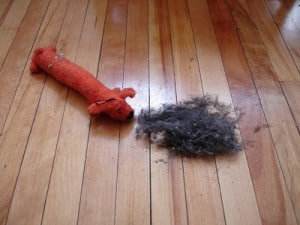8/3/2014
Good day and welcome everyone!
This is Sharda with a wonderful newsletter about dog grooming.
Can dog coat shedding affect grooming?
SHEDDING AND ELIMINATING THE SMELL
Shedding is a cyclical event in the life of a dog.
Single coated and double coated dogs both shed their fur twice a year because it tends to grow in seasonal cycles.
However, single coated dogs shed far less than double coated dogs in both amount and duration for reasons that we will examine in a little while.
It is worth noting, though, that some breeds of dog do not shed at all.
The following are all breeds that do not shed, but all of those not included in the following list shed to varying degrees: Airedale Terrier, Basenji, Bedlington Terrier, Bichon Frise, Bolognese, Border Terrier, Brussels Griffon, Cairn Terrier, Chinese Crested, Cockapoodle, Coton de Tulear, Havanese, Irish Water Spaniel, Kerry Blue Terrier, Labradoodle, Lowchen, Maltese, Poodle, Portuguese Water Dog, Puli, Schnauzer, Soft Coated Wheaten Terrier, Tibetan Terrier, West Highland White Terrier, Wirehaired Fox Terrier and Yorkshire Terrier.
So why do dogs shed their fur? Well, it effectively grows to a genetically pre-determined length and then falls out so the growth cycle can begin again. It is affected by the hours of sunlight and the atmospheric temperature so the exact time of shedding can vary from season to season and year to year.
However, the general rule is that double coated dogs tend to shed their undercoats when the temperatures are warmer. This allows them to get rid of enough of their undercoat for it to be able to cool instead of heat their bodies, which is appropriate given the fact that their sweat glands are located in their feet and not anywhere else on the body!
They also shed the lighter undercoat that grows during summer as the temperatures start to drop again so that they can re-grow their insulating thick winter coat.
Shedding does happen in other circumstances that are related to the female’s hormones as well. For example, if a female dog has had a little of puppies or happens to be heading out of heat then this can cause shedding too.
However, the general rule is that dogs usually shed twice a year and this means that a female that sheds as a result of hormonal imbalances will only shed once more that year.
As with anything else, there are exceptions to the rule and some dogs may shed all year round as a result of the climate and lack of environmental changes. For example, in temperate climates, some dogs may continuously shed in order to keep the right balance in terms of the body temperature.
Of course, some dogs do not shed at all. This is primarily in cold climates and in certain breeds, such as the Poodle. Poodles never shed but instead have coats that continuously grow unless the owner trims it.
When shedding occurs, it does not just happen overnight. Instead, you will notice that small tufts of the undercoat hair begin to push through the guard hair. You should pick this up as soon as possible so that you can take action because if you miss the early signs then you will find that there are hairs all over the place.
Dog Grooming through shedding is as difficult as it is frustrating. The amount of hair shed depends on the breed and the dog so you may more or less hair to deal with accordingly.
However, you will have to brush your dog every single day until the shedding subsides. There is another tool that you can use through – the shedding blade. The shedding blade is the only option when it comes to handling your dog’s hair effectively.
It works by pulling the hair away from your dog’s coat and is worth every penny as a result. The hair is pulled away and moved into a pile on the floor.
As such, all of the loose hairs are removed at one time and move to one place, which makes cleaning up an awful lot easier as well! Another function of the shedding blade is to remove the hair that is effectively dead and will leave a bad smell around.
Speaking of which, it is essential to look after your dog’s coat in order to eliminate the smell. If you do not bath, brush and generally groom your dog then the likelihood is that your dog’s coat will seriously begin to smell.
This applies to single and double coated dogs so you have to get into a routine as soon as possible if you want to keep the smell at bay. The only way to eliminate the smell is to wash it away thoroughly on a regular basis, use the proper dog grooming tools and supplies and make sure that your dog is fully and effectively groomed.
I hope you learned a lot from today’s dog grooming newsletter.
I will be back for more!
Warmly,
Sharda Baker

